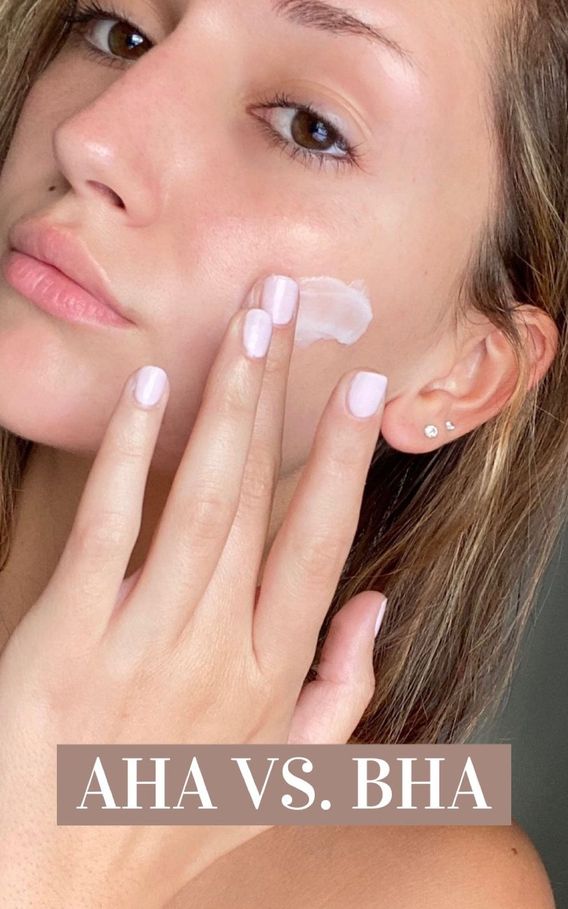
- AHA stands for alpha hydroxy acid. AHAs are water-soluble acids naturally derived from substances such as sugarcane, fruits, and milk. They are a class of natural or synthetic ingredients used in a variety of skin care products.
- BHA stands for beta hydroxy acid and is otherwise known as “salicylic acid”. BHAs are a type of oil-soluble acid naturally derived from willow extract and other plants.
How do AHAs work?
AHAs work as a chemical exfoliant that peel dead skin cells off the surface layer of your skin to reveal fresh new skin cells underneath. The extent to which it removes dead skin cells depends on the type of AHA, PH level, concentration, and other ingredients it may be applied with. In addition to exfoliation, research claims they help to:
- Brighten
- Smooth
- Firm
- Hydrate
- Promote blood flow and collagen production
- Reduce the appearance of fine lines and wrinkles
- Improve skin tone and texture
- Unclog and cleanse pores
- Treat and prevent acne
- Increase product absorption
Therefore, AHA exfoliants are often used to produce anti-aging results and promote the appearance of young and healthy skin. The most common types of AHAs found in skin care products are:
- Glycolic acid
- Lactic acid
- Malic acid
- Tartaric acid
- Citric acid
- Mandelic acid
Glycolic acid and lactic acid are the most effective and widely used ingredients. AHAs can be found in most daily skin care products and they are gentle on sensitive skin.
How do BHAs work?
BHAs are similar to AHAs in that they are both chemical exfoliants. However, instead of just dissolving the dead skin cells off the surface layer of the skin, BHAs work deeper inside the pores to improve cell turnover.
BHAs are commonly referred to as “salicylic acid” because this is the main BHA found in most products. Other BHA exfoliants seen in skin care products may be listed as:
- Betaine salicylate
- Beta hydroxybutanoic acid
- Tropic acid
- Trethocanic acid
Both BHAs and AHAs offer similar benefits such as improving skin tone, brightening, smoothing and so on. But since BHAs are oil-soluble, they penetrate through any oils on the skin to unclog and cleanse pores from the inside. This prevents the build-up of oil and dead skin that causes breakouts. Therefore dermatologists and specialists more often recommend BHAs for people with oily and acne-prone skin. BHAs are also less irritating than AHAs because of their larger molecule size and anti-inflammatory properties.
Whats the difference?
To quickly compare, the main differences between AHAs and BHAs:
- AHAs are water-soluble and BHAs are oil-soluble. This means BHAs are able to dissolve in oils where AHAs can only dissolve in water.
- AHAs are more appropriate for dry skin and BHAs are great for oily skin because BHAs have the ability to reduce excess oil.
- AHAs only work on the surface layer of skin while BHAs penetrate deeper into pores.
- BHAs can be less irritating than AHAs.
All thats left to do is choose the right exfoliant for your skin! Feel free to experiment with both AHAs and BHAs to find what products are right for you. Whether you are looking to fix a skin concern or improve the overall health and appearance of your skin, both exfoliants may be beneficial.